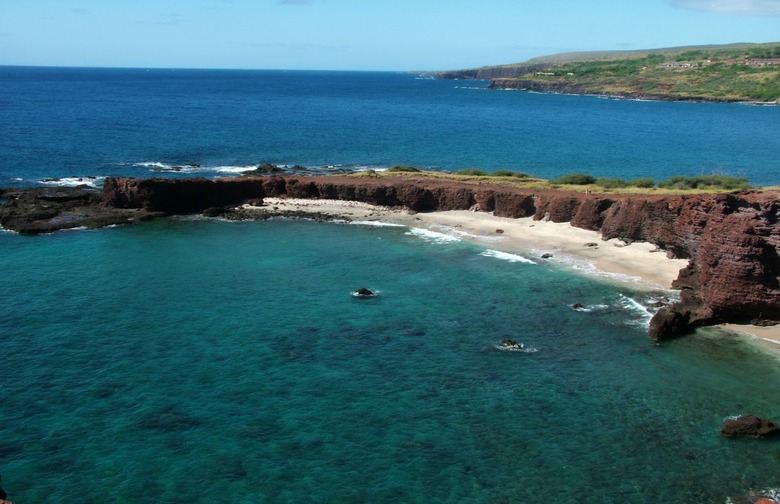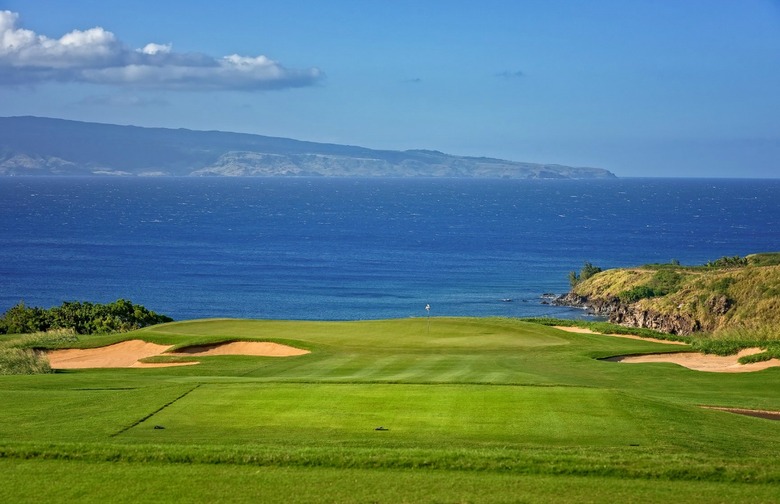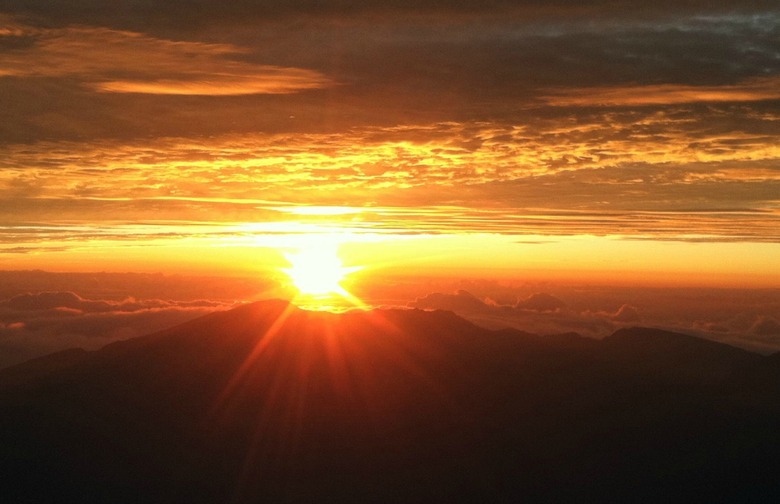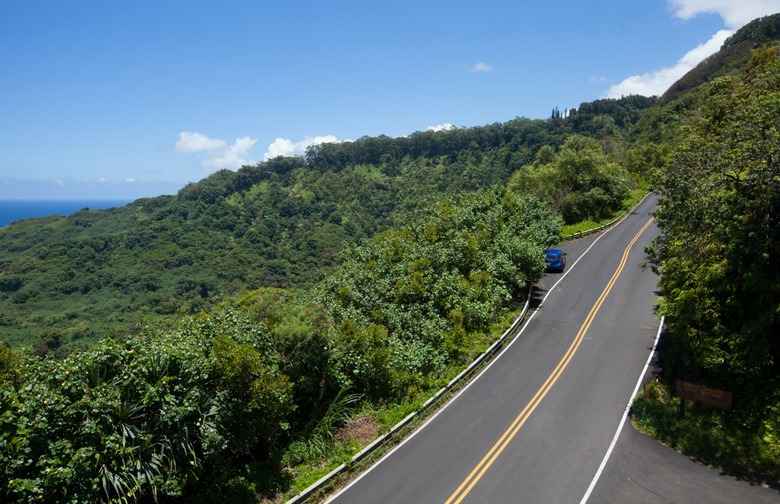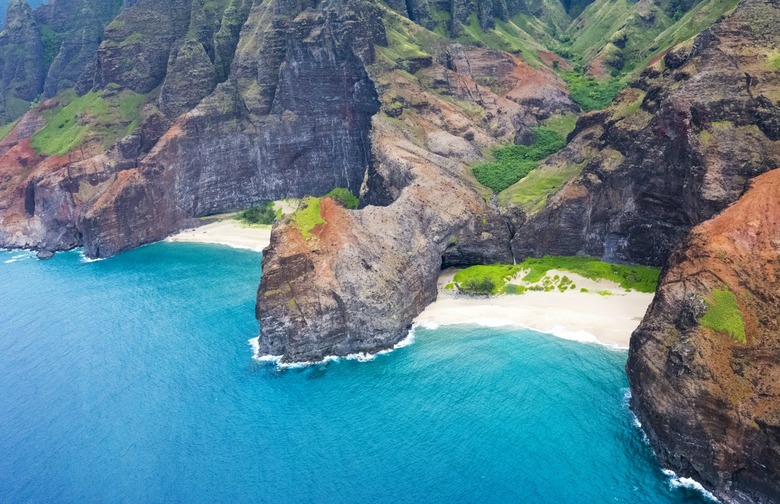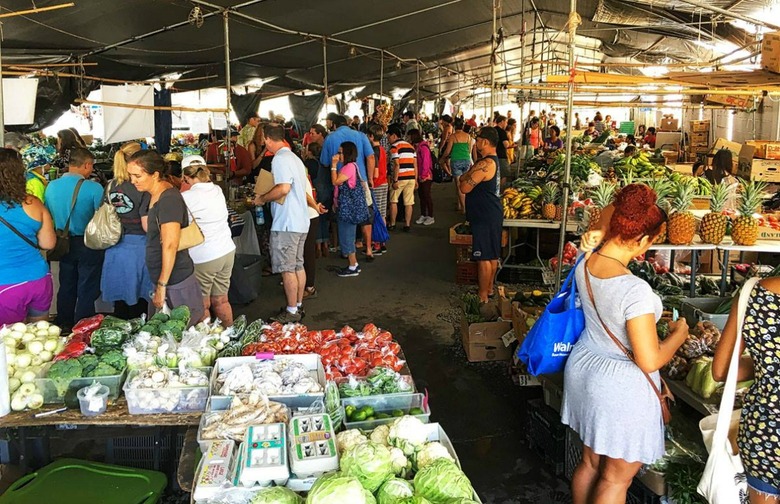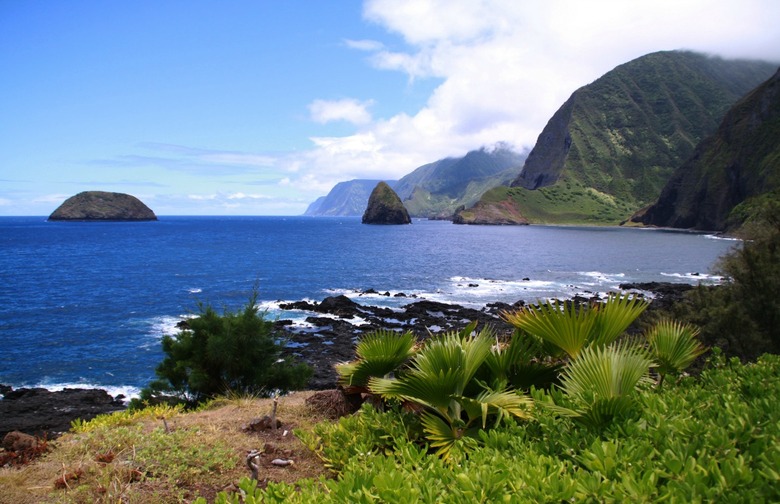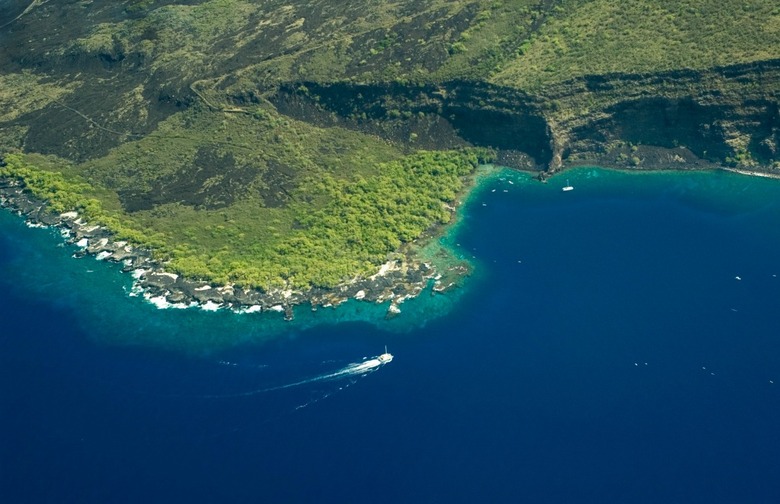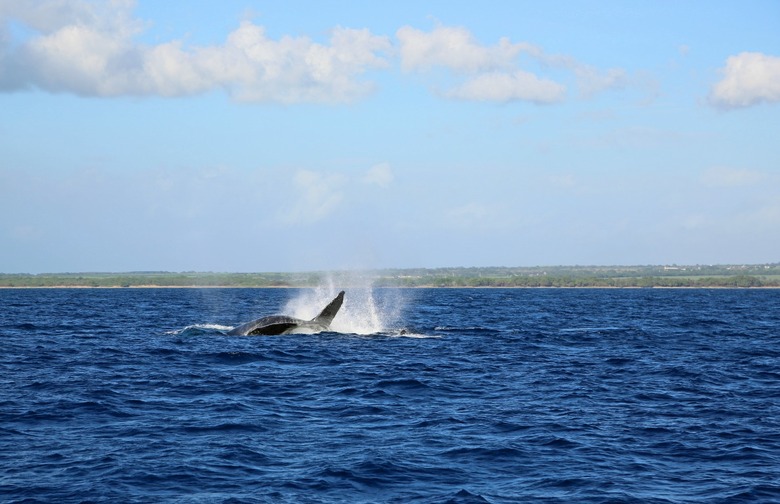10 Reasons To Skip Oahu On Your Next Hawaiian Vacation (Slideshow)
Apologies to, well, pretty much every beach in Oahu, but the other islands have some of the best beaches around. If you're looking for avoid tourists, opt for Lanai's Hulopoe Beach. The well-protected area makes for a good swimming beach (of which there is a shortage on the island), there's excellent snorkeling around the volcanic tide pools and near the rocks on either end of the beach, and it is often cited as one of the most beautiful and romantic in the state. Elsewhere, Hapuna Beach on the Big Island is another must-visit, offering clean, clear water and a sandbar that extends 25 yards into the ocean. The conditions here are superb for snorkeling, swimming, and boogie boarding. The beach gets a bit crowded in the evenings, but since it's the largest on the island, there should still be plenty of elbow room.
Looking for booze on the beach? Click here for the best beach bars around the world.
Golf
Oahu has some great golf courses, but when Golf.com ranked the 20 best public courses in Hawaii for 2014, only two were in Oahu — with the top nine all coming from other islands. In fact, the state's four best all came from different islands: Kapalua/Plantation (Maui), The Prince at Princeville (Kauai), Mauna Kea (Big Island), and The Challenge at Manele (Lanai). Long story short, there are a whole lot of great local links in Hawaii, and you won't miss much by skipping Oahu — in fact, you'd probably miss more if you didn't skip Oahu.
Haleakala Crater, Maui
If you only do one thing on the island of Maui, it should absolutely be a trip to see the famous Haleakala Crater in Haleakala National Park. But first, a science lesson: Unlike most craters formed by volcanic activity, Haleakala was actually shaped over eons as the result of erosion of the entire volcanic mountaintop. When the smaller lava flows back-filled the eroding valley, this built the floor of the crater, which is why it is officially called the "Haleakala National Park Summit Area" instead. For the best experience, wake up extremely early (about 3 a.m. local time) and make the drive (or take a bus tour) all the way up to the 10,000-foot-high summit, where you can view the sun rising in the distance while looking down at the Crater through the clouds.
Haleakala might not be the best National Park in America for a picnic, but these 10 are.
Hana Highway, Maui
Since you're already in Maui for the Haleakala Crater (and possibly have a car), consider a drive up the famous Hana Highway (Highway 36 and Highway 360). The route is packed with 59 bridges (many of the single-lane variety) and 620 curves, and ends in the small town of Hana on the eastern shore. The trip takes two to three hours without stops — but trust us, you'll be stopping often for photos. One of those stops should be Pua'a Ka'a State Wayside Park (near mile markers 22 and 23, and home of the stunning waterfall pools), another should be Kahanu Garden (for Pi'ilanihale, the large Hawaiian temple), and the last should be Waianapanapa State Park (for its famous black sand beach).
Hawai’i Volcanoes National Park, Big Island
The Big Island of Hawaii is home to five volcanoes, and two of them — Mauna Loa and Kilauea — are protected by Hawai'i Volcanoes National Park. Although still active, the pair generally have non-violent eruptions, with the former last erupting in 1984 and the latter currently erupting, which it has been doing since 1983. Although it might sound dangerous, park visitors can actually get surprisingly close to the action, but are urged to use caution, stay on marked trails, and not hike after dark. Alternately, visitors can enjoy views from the Jaggar Museum's enclosed room overlooking the Kilauea Caldera, or witness active lava flows while taking a drive (if the conditions permit it) along the Chain of Craters.
Hiking the Na Pali Coast, Kauai
There's no shortage of hiking trails in Hawaii, but none is better than the 22-mile (roundtrip) Kalalau Trail that cuts through the famed Na Pali Coast in Kauai's Na Pali Coast State Park. However, it's not for everyone. Originally built in the mid-1880s, the trail has switchbacks, sheer drop-offs, and cliff-hugging turns through five valleys before reaching the golden sands of Kalalau Beach. Hikers often pitch tents under the jungle canopy and go for a dip in the ocean or under the beachside waterfall in order to experience all nature has to offer. To give you an idea of how enjoyable this area can be, the state only permits visitors to stay in the park for a maximum of five days — yet some park-goers still have trouble leaving within this timeframe.
Hilo Farmers Market, Big Island
Having just covered the 50 Best Food Halls in America 2016, we're now even fonder of getting lots of food vendors together in one place. The best location for that in Hawaii? The Hilo Farmers Market on the Big Island, which began in 1988 with only four farmers, and has since grown to over 200 vendors selling everything from fresh fruit, to tropical flowers, to gifts and crafts, to prepared meals. Thai food is quite popular at the market, but one would be remiss to skip the local favorites, barbecue offerings, baked goods, and poi — including dishes like Hawaiian fried rice and the uber-popular poke (make your own version in five minutes here).
Oloupena Falls, Molokai
If the nickname "The Friendly Island" isn't enough to get you to Molokai, maybe Oloupena Falls, the fourth highest waterfall in the world, will do the trick. Unlike a lot of the more popular water falls, Oloupena doesn't offer a very high flow rate or water density, but the thin, gentle trickle makes the enormous height seem even taller. Perhaps even more impressive than the falls itself are the surrounding cliffs, which, at heights of 3,600 to 3,900 feet, are also among the tallest in the world. You can view the cliffs while traveling to or around the island via plane or helicopter, but we'd recommend looking up at their grandeur instead while kayaking around the north coast or taking a mule ride down to Kalaupapa. The cliffs here are so shockingly steep that 26 switchbacks are needed to traverse the trail.
Snorkeling at Kealakekua Bay, Big Island
Countless brochures and travel sites call the snorkeling at the Big Island's Kealakekua Bay the best in the state, and it's hard to disagree. Forget taking a boat far from the shore and diving into the depths, because fish of all shapes, sizes, and colors can be found in knee-deep water right along the shore, and spinner dolphins are a routine sighting in the area. The area is also historic, as it includes the location where the first documented European to reach the Hawaiian Islands, Captain James Cook, first set foot, and later died. It can get a bit crowded here at times, but there's good reason for that.
Whale Watching, Maui
It might be the relatively shallow 600-feet-deep water, the crystal-clear visibility, or the protection from strong trade winds (courtesy of the West Maui Mountains and Haleakala Volcano), but whales love to hang out in the area between Maui, Lanai, Molokai, and Kahoolawe — known as Maui Nui. Regardless of the true reasoning, this region is the final destination of more than 10,000 whales that travel an average of 2,500 nautical miles every winter to mate, give birth, and nurse their young. Arrive during the whales' peak season (between January and March) and catch a boat from Maui's western shore for the best chance to spot these majestic mammals.
Check out this questionable new Icelandic beer that contains whale testicles.
